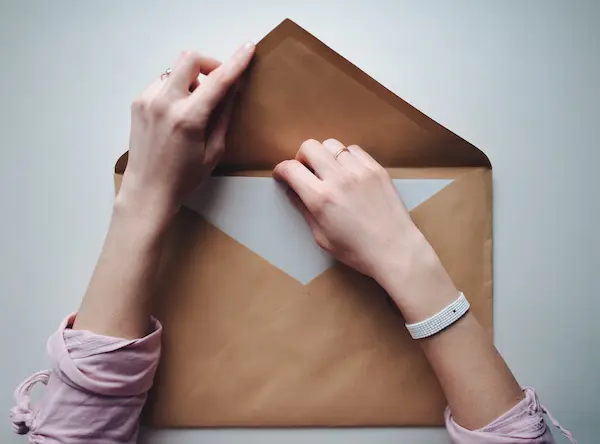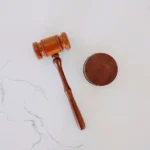Are you confused about the differences among the types of envelopes? If so, we hear you. With so many variations of this little paper companion, keeping all the terminology straight can seem difficult.
In this article, we will explain the different types of envelopes and help you choose the right one for your next mailing campaign. With this simple advice, you can ensure your envelopes complement rather than detract from your mailing strategy.
Let’s get started!
Standard Letter Envelope
Standard letter envelopes are the most common type used for everyday communication. They are ideal for sending personal and business letters, invoices, statements, and other standard-sized documents.
These envelopes typically measure around 4.125 x 9.5 inches (10.5 x 24.1 cm) and have a simple, rectangular design with a gummed flap for sealing. They are available in various colors and paperweights to suit different preferences and mailing needs.
Window Envelope
If the receiver’s address is already printed on paper, window envelopes are a good way to send it. The envelope has a clear window that lets the address show through.
This means you don’t have to write the address on each envelope by hand. People often send invoices, bills, and letters made with mail merge in window boxes.
Legal Envelope
Legal envelopes are designed to hold legal-sized documents, typically larger than standard envelope size. These envelopes have an elongated shape to accommodate the longer documents.
These legal documents envelopes are also widely used for transporting legal contracts, official papers, certificates, and other legal materials.
Catalog Envelope
Catalog envelopes are large, sturdy envelopes that are made to hold thick and bulky things like catalogs, brochures, booklets, and marketing materials. They come in different sizes so that they can hold different-sized documents.
Catalog envelopes often have a seam down the middle, making them more durable and keeping things from moving while traveling. Businesses often use them to send out marketing papers and catalogs of their products.
Greeting Card Envelope
Greeting card envelopes are designed to hold various greeting cards, invitations, and note cards. They come in various sizes, usually corresponding to standard card sizes.
These envelopes typically have a gummed flap, and some may include peel-and-seal or self-sealing closures for added convenience. This booklet envelope often features decorative designs, textures, or colors to complement the occasion or enhance the presentation of the card.
Bubble Mailer
Bubble mailers, also called “padded envelopes,” are made to protect fragile or expensive items while they are being shipped. The outside is made of paper or plastic, and the inside is lined with bubble wrap to protect the items inside from damage during shipping.
Bubble mailers come in different sizes and are often used to send books, CDs, DVDs, jewelry, small electronics, and other fragile or valuable things.
Learn the Different Types of Envelopes Today
Envelopes are important for many reasons, and there are several different kinds that you may need to use. Once you know the different types of envelopes, you can choose the right one for your needs.
Using your envelope with care will ensure that you send something off with the right look and feel and with the proper closure. So start exploring your envelope options today!
Was this article useful to you? If so, be sure to check out our blog for more helpful content and resources.







